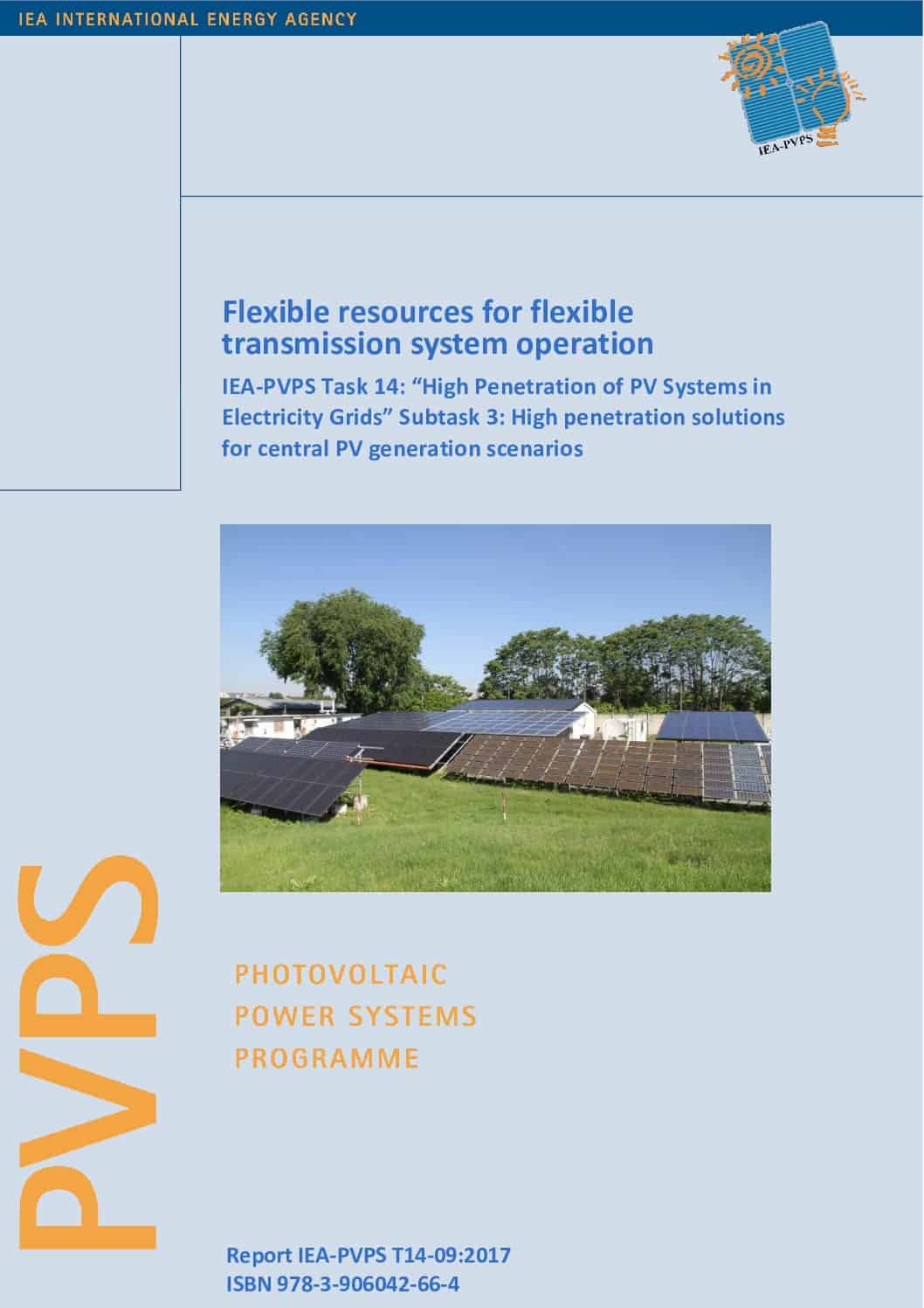The dramatic increase of PV generation implies several challenges in transmission and distribution system operation. As for transmission, major issues relate to the variability, uncertainty, reduction of inertia and regulation capabilities, with consequent higher needs in flexibility resources requirements. Flexibility is considered as the ability of the power system to deploy its resources with the aim to match with changes in “net load” (e.g. load minus DG output including variable generation) ensuring a stable and a secure operation. In particular, high PV penetration significantly affects the daily profile of “net load”: lower net load in central daylight hours involves the risk of over-generation since a minimum amount of traditional generation is required for operational security (e.g. balancing reserve); in the evening, the decreasing PV output, which occurs together with the evening load demand ramp, exacerbates the upward ramps of net load with consequent risk of inadequate system response. The above concerns are further increased by the progressive decommissioning, due to loss of market competitiveness, of thermal power plants i.e. the main traditional resources of flexibility. New, highly performing flexibility resources are therefore gaining more and more importance.
This report provides a review of present and expected scenarios about flexibility in system operation. It summarizes and integrates results of a survey involving national experts in six countries, namely Belgium, Germany, Greece, Italy, Japan, and Switzerland. Information is provided about:
- power systems and markets with presence of PV;
- existing flexibility resources;
- innovative flexibility resources, including demand response and PV output management for system operation. Contents are structured in order to support scenario development in future PV integration studies.
The main conclusions of the report are the following:
- High reliability in PV forecast can be achieved in the short-term (e.g. 1 hour or less). However, not all the flexibility resources can be activated compatibly with this time frame. Consequently more and faster flexibility resources are needed (e.g. improving the thermal power performances of installing battery energy storage systems).
- A large amount of renewable energy sources (RES) requires probabilistic approaches for the assessment of balancing reserve requirements aimed to compensate RES forecast uncertainty, accepting a certain risk in order to limit expensive over-estimations.
- In order to face the changes in net load daily profile, new highly performant flexibility resources are needed, such as:
- thermal power plants allowing shorter starting time, lower number of hours of continuous operation, smaller minimum “off” time, faster ramping capability;
- distributed generation (DG) output modification;
- demand response (DR);
- battery storage.
- DR is endorsed in order to be exploited for peak shaving, power balancing and congestion management. Participation of electric vehicles in DR is considered a reasonable opportunity.
